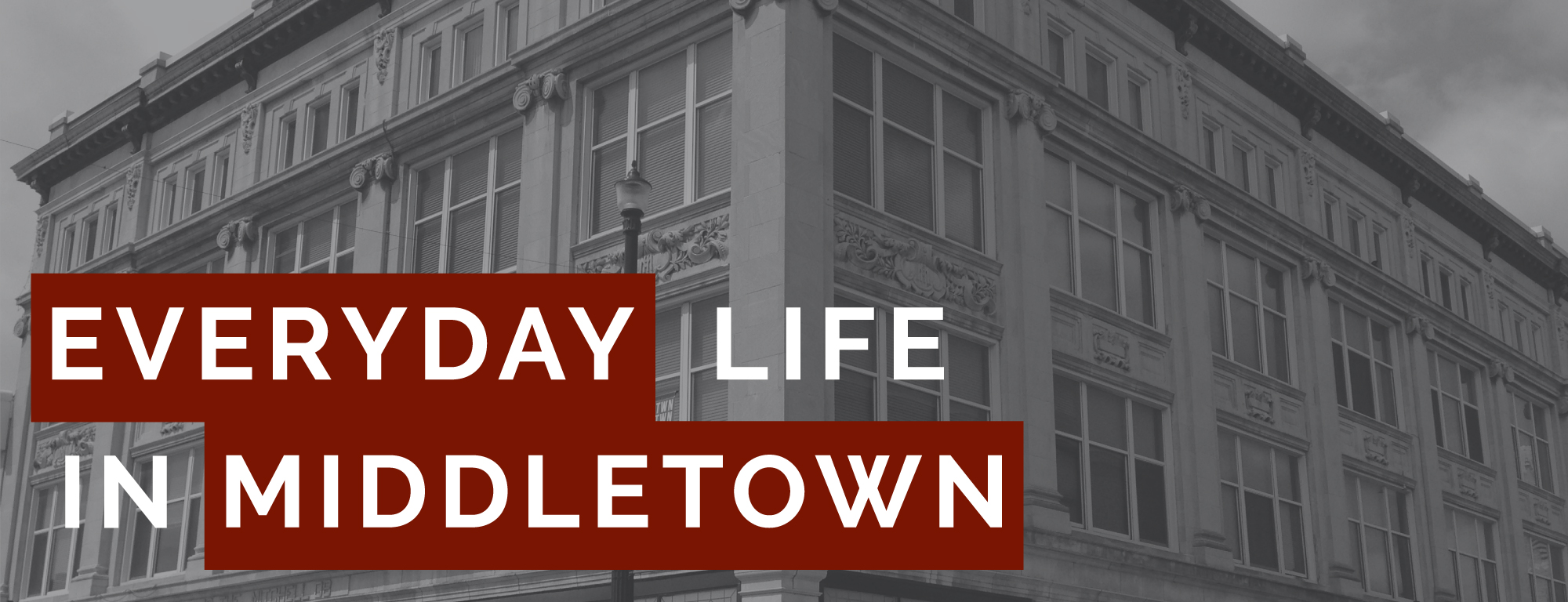My diary day started differently this time as I was awake well past midnight because I was enjoying the women’s softball game between the Alabama Crimson Tide and the Razorbacks of Arkansas. Extra innings resulted in a Tide victory. All of the players were very skilled and it was a pleasure to watch them.
I woke at the usual time so this meant that I had little sleep. I was in a motel room in southern Indiana and after the usual shower and coffee, I hit the streets. My first stop was Hanover College, not far from Madison, Indiana. It is the oldest private college in the state, having been founded by local Presbyterians around 1827. At the entrance, I was surprised to see that the access road was named “Lucina Ball Drive”. I was unaware that Lucina had a Hanover connection so I sought out the archivist at the college. According to her, Lucina did not have a direct connection, but her father was on the Board of Directors, and he donated the funds to build the road in her honor. The view of the Ohio River from Lucina Ball Drive is beautiful. Thank you, Mr. Ball.
Moving on, I drove through Cliffy Falls State Park on my way to Madison, Indiana. I was interested in the Conference Center as I had family that had participated in retreats here in the 1960. It was popular in the mid-20th century, and Eleanor Roosevelt visited at one time. Unfortunately, the original conference center was destroyed by a tornado in 1973. The new building is very nice, but I wanted to see the historic structure as the purpose of this vacation was to follow history—my family’s, as well as Hoosiers, in general.
Madison, my next stop delivered all of the historic structures I could want. Madison was founded in 1809 and provided a gateway into Indiana and the Northwest Territory. This is what the community says about their town:
An Outdoor Museum of Architecture
With more than 133 blocks of outstanding architecture, Madison’s downtown business district is one of the country’s largest National Historic Landmark Districts. Madison’s founders brought with them their own history, which is displayed in the architecture of the homes and buildings that make up this historic gem. Travel America says,“Madison is an outdoor museum of architecture.” There are 8 house museums that are open to the public during the season and several more open by advance appointment.
It proved to be everything advertised and more. The one home that is owned and shown by the State of Indiana is beautiful. Most of the rest of the buildings are privately owned and have been remodeled by the families that now occupy them. There are no McDonalds or Wal-marts here. I found one Dollar General which is in an old build on a side street It is out of place but I understand that the people who live here would need a place to get soap or toilet paper without going to the locations where the Kroger’s are built. Madison has an excellent visitors center and history museum, and they provide written materials on many tours (e.g., historic churches, walking tours, etc.). They were fully staffed and ready to discuss events around town.
Throughout this southeastern part of the state, I found repeated signs and statues about the Lewis and Clark National Historic Trail. It is part of the National Park Service (NPS) and they state it “is the product of many diverse groups: federal, tribal, state and local agencies, and public and private organizations. These groups work together across more than 4,900 miles of the Trail to provide opportunities for visitors to experience and learn about the Lewis and Clark Expedition and its many stories.”
The Lewis and Clark Trail follows the Ohio River Scenic Byway, Route 62, in this part of Indiana. It is alive and well and offering a Junior Ranger program for students this summer. This educational opportunity is listed in free newspapers that I found in small towns, as well as at the Falls of the Ohio State Park.
I am putting too much into one day, but I persevered and followed the markers of the John Hunt Morgan Heritage Trail. The Indiana markers start just north of the Ohio River, with the only significant battle in Indiana being in Corydon. There is a county administered battlefield in Corydon. The local militia did not delay Morgan and the Calvary very long, and he moved north, going through Salem, Vienna, Lexington, Dupont, Vernon, etc. Signs and markers are visible in all of these towns. The historical museums in Vernon and Scottsburg had information on the raid and staff were ready to share personal connections. One citizen said that her great, great, grandfather was held by Morgan for a time, and then released unharmed. Another resident is still looking for any cistern where he may have hid loot!
History is respected in many of these small towns. Towns like Lexington have signs posted about its founding and boosts that it is a pioneer community. The school mascot is the Minutemen. The free newspaper advertises the Lewis and Clark Junior Ranger Program. A local party is being held to celebrate one family’s genealogy. The Vernon Historical Museum has three floors of material and many oral histories in its possession. I was well into 8 hours of touring by this time, and running out of gas in more ways that one. I decided it was time to head north to Muncie.
I avoided interstates during this trip to find the local flavor, hoping that something is left of historic Indiana. I found that much history is left to be viewed if you take the time to hunt it out. So, I took State Road 3 North and went through Rushville as my last stop. There I saw that they still remember Wendell Lewis Willkie, who ran for President in the 1940’s.
I move on north and soon I am back in Muncie. Had a bite to eat and tried to listen to the Cincinnati Reds play baseball. I fall asleep, but I had a good day following Indiana history.

